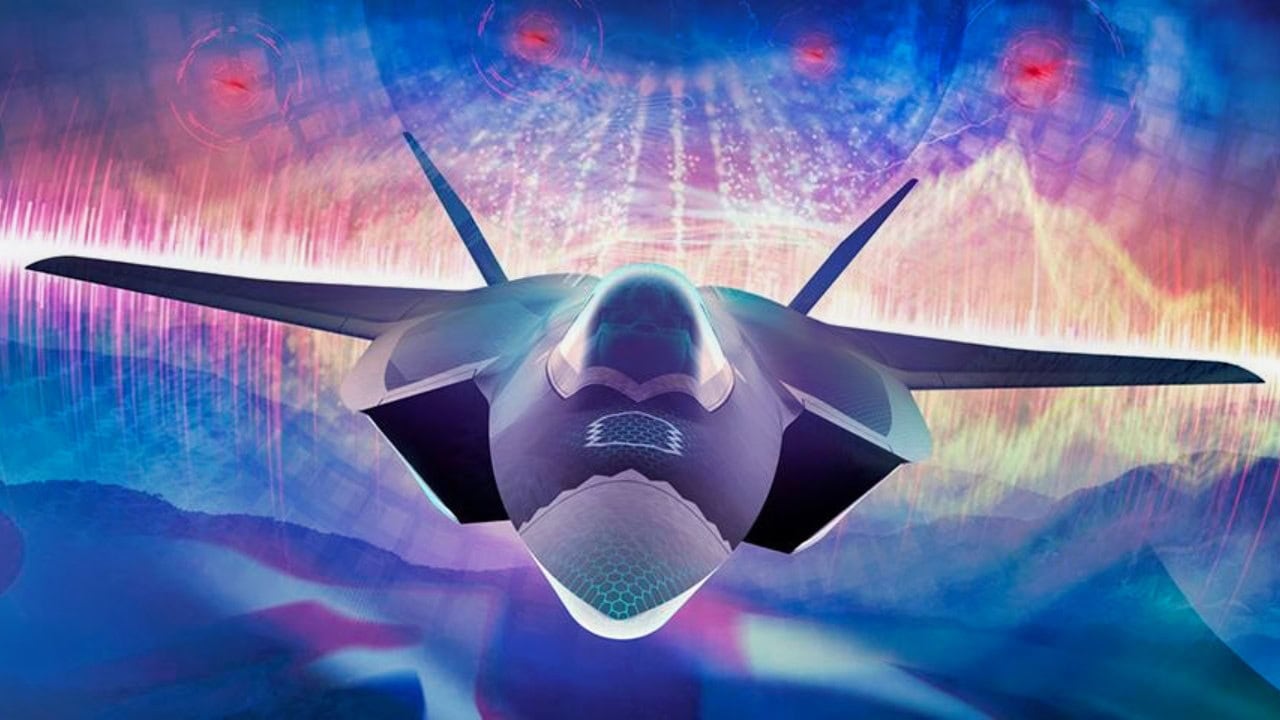For decades, the US has held a monopoly on fifth-generation fighter jets. Only in recent years have other great powers such as China and Russia began closing the gap in US air superiority.
The Global Combat Air Programme (GCAP) is a groundbreaking multinational initiative aimed at developing a sixth-generation stealth fighter.
This ambitious project is a collaboration between the United Kingdom, Japan, and Italy and potentially other nations like Saudi Arabia. The GCAP project represents rest of the modern world’s efforts to create advanced fighters without the help of The US or China.
Those Three Words: A True Game-Changer
The Multinational Stealth Fighter Project
The GCAP fighter emerged from the convergence of two separate sixth-generation fighter projects: the United Kingdom-led BAE Systems Tempest and the Japanese Mitsubishi F-X. The collaboration was officially announced on December 9, 2022, when the governments of Japan, the United Kingdom, and Italy agreed to merge their efforts and develop a common fighter jet. This decision was cemented with a treaty signed in December 2023 in Japan.
The program aims to replace the Eurofighter Typhoon in service with the Royal Air Force (RAF) and Italian Air Force, as well as the Mitsubishi F-2 in service with the Japan Air Self-Defense Force. The GCAP fighter is expected to enter service by 2035, with a demonstrator aircraft scheduled to fly in 2027.
The GCAP fighter is designed to be the new cornerstone of the air forces of Japan, Britain, and Italy. It features a large delta wing, which provides extended range and efficiency. The design emphasizes stealth and payload capacity over extreme maneuverability, reflecting the evolving nature of aerial combat.
Looking Inside the GCAP Fighter
One of the most striking aspects of the GCAP fighter is its size. It is significantly larger than existing fighters like the Typhoon or F-35, with a moderately swept delta wing that spans around 16.5 meters. This design choice enhances the aircraft’s range and payload capacity, making it well-suited for long-range engagements and operations in the Pacific theater.
The GCAP fighter is equipped with cutting-edge systems, including advanced radar and potential high-power microwave capabilities. These technologies are designed to provide superior situational awareness and electronic warfare capabilities, ensuring the aircraft’s effectiveness in modern combat scenarios.
The GCAP fighter incorporates several technological advancements that set it apart from previous generations of fighter aircraft. These include stealth technology, advanced radar systems, high-power microwave capabilities, and innovative energy and cooling systems.
The GCAP fighter’s design prioritizes stealth, with features that minimize its radar cross-section and infrared signature. This makes it harder for enemy radar systems to detect and track the aircraft, enhancing its survivability in hostile environments.
The aircraft is equipped with state-of-the-art radar systems that provide superior detection and tracking capabilities. These systems are designed to operate in contested environments, where electronic warfare and countermeasures are prevalent.
The GCAP fighter may incorporate high-power microwave systems, which can disrupt or disable enemy electronics and communications. This capability adds a new dimension to the aircraft’s electronic warfare arsenal. Innovative energy and cooling systems ensure that the GCAP fighter can accommodate future upgrades and enhancements.
These systems are crucial for maintaining the aircraft’s performance and reliability over its operational lifespan.
The GCAP fighter’s design also allows for growth in capability, ensuring that it remains relevant and effective in the face of evolving threats and technological advancements. This adaptability is a key feature of the aircraft, reflecting the need for modern military platforms to be flexible and upgradable.
The GCAP Fighter and the Global Stage
The development of the GCAP fighter has significant strategic and geopolitical implications for the participating nations and their allies. By pooling their resources and expertise, Japan, the United Kingdom, and Italy can develop a more advanced and capable fighter than they could individually. This collaboration also strengthens the defense ties between these nations, promoting greater interoperability and coordination in joint operations.
The GCAP fighter is expected to play a crucial role in the defense strategies of Japan, Britain, and Italy and any other nation that gets involved in the future. Its long-range capabilities and advanced systems make it well-suited for operations in the Indo-Pacific region, where the strategic landscape is increasingly dominated by long-range threats and contested environments. The aircraft’s ability to operate from distant bases adds strategic flexibility, allowing it to respond to emerging threats and crises more effectively.
The GCAP fighter represents a major leap in multinational defense collaboration and technological innovation. As the program progresses, it is likely to attract interest from other nations seeking to enhance their air combat capabilities. Australia, for example, has been mentioned as a potential future partner, given its strategic interests in the Indo-Pacific region.
All this being said, there is still a long way to go before the GCAP is ready to take the skies and there are still many tests left before it get accepted into any air force. The biggest challenge will be ensuring the budget for the fighter does not unexpectedly skyrocket making it too expensive to purchase in large numbers.
The GCAP is also competing directly with the Future Combat Air System (FCAP) led by Dassault and Airbus, which could lead to cost increases due to overlapping technology.
About the Author: Isaac Seitz
Isaac Seitz, a 19FortyFive Defense Columnist, graduated from Patrick Henry College’s Strategic Intelligence and National Security program. He has also studied Russian at Middlebury Language Schools and has worked as an intelligence Analyst in the private sector.

